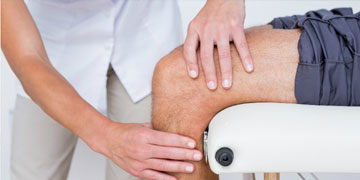What is Arthritis ?
Arthritis is a common term used by people which essentially means nothing but inflammation in and around the joint
Osteoarthritis also knows as OA, is a type of arthritis which develops with age causing wearing out of the joint and its structural components. Osteoarthritis is very rampant in India especially in old age population . It affects joint that help to weight bear of our human body such as knee, hips and spine.
Let us try to understand how it occurs in the simplest language and shortest way….
We need to  know what is cartilage before we start talking about OA Cartilage is a protective layer which covers the end of bones that meet at the joint and avoids direct rubbing of bony ends over each other. It also acts like a shock absorber reducing the stresses over the bony ends.
know what is cartilage before we start talking about OA Cartilage is a protective layer which covers the end of bones that meet at the joint and avoids direct rubbing of bony ends over each other. It also acts like a shock absorber reducing the stresses over the bony ends.
Osteoarthritis affects the cartilage and makes it harder and stiffer making it less effective in working as a shock absorber. This hard and stiff cartilage is more prone to breakage as well and eventually gives up in some areas of joint causing erosion of the cartilage that is nothing but damage of the cartilage exposing the underlying bone which it was protecting.
Now these exposed underlying bones rub against each other and become cause of pain in every movement that involves these joints. Also because of this there is increased stretching and tensioning of the muscles, tendons and ligaments causing additional pain and discomfort. So this cartilage affection is the main culprit of causing osteoarthritis. Few factors that cause or fasten the procedure of development of osteoarthritis are obesity, overuse of joints, lifestyle and so on.
SIGNS AND SYMPTOMS OF OSTEOARTHRITIS AND INVESTIGATIONS
So as we discussed that osteoarthritis affects weight bearing joints such as knees, hips and spine.
Typical symptoms of osteoarthritis are as follows
- PAIN – many patients have continuous pain in their joints due to OA, but most of them have pain during walking or starting to walk after prolonged sitting. Most of the time the pain is there while taking every step while walking.
- STIFFNESS – joint stiffness is nothing but inability to move the joint as it was previously freely movable. In other words the range of movements of the joints are decreased.
- .DEFORMITY – prolonged untreated OA starts deforming the joints causing deformities. There are various deformities such as bowing knees which could be inwards or outwards or forward bending.
4.GAIT- painful gait or waddling gait is very common. Many many patients have stooping posture due to pain.
INVSTIGATIONS
RADIOGRAPH ( X-RAYS)- are the basic investigations for diagnosis of OA
MRI might be needed for diagnosis in so
CONSERVATIVE (NON SURGICAL) TREATMENT OPTIONS
1.LIFESTYLE MODIFICATIONS
These include regular EXERCISES
Exercises help to build and improve strength in the muscles around the joints which helps in lowering impact on joints.
Also exercises improve the range of movements of the joints which would lowewr the chances of stiffness of joint
Next important lifestyle modification is WEIGHT REDUCTION.
Reduction in weight reduces stresses on the weight bearing joints and reduce the chances of causing OA
If you are diabetic, CONTROL OF BLOOD SUGAR is very much important to alleviate pain.
2.MEDICATIONS
There are several kinds of medications such as NSAIDS for control of pain of OA, but these medications should not be taken unsupervised and without doctors advice.
3.PHYSIOTHERAPY
IFT, TENS, Muscle strengthening exercises, Hot or cold compresses may help relieve the pain due to OA
4.SUPPORTIVE DEVICES
Braces (hinged, compartment offloading ), knee caps , crutches or canes as per your doctors advice may help you
5.INJECTIONS
Injection of hyaluronic acid directly in the joint by your doctor can help in lubrication of the joint and reduce the inflammation in and around the joint helping in pain relief.
SURGICAL TREATMENTS
1.ARTHROSCOPY
Arthroscopy procedures are used to wash out the inflammatory substances in the joint and clear out the wear and tear debris. Also depending on the cartilage damage, repair procedures are also available.
2.HIGH TIBIAL OSTEOTOMY
This is a procedure which helps in offloading the affected compartment of your knee joint and prolonging the life of your knee,
This is a surgical procedure with excellent results if done right. There are multiple ways to perform this surgery, your orthopedic joint specialist is the best person to suggest you about the same.
3.UNICONDYLAR / TOTAL KNEE REPLACEMENT / TOTAL HIP REPLACEMENT
Arthroplasty or joint replacement surgery is replacing the damaged joint with an artificial one. With the latest technology, nowadays we are replacing the damaged portion of joints with precision and accuracy.
After joint replacement surgery, patients are able to walk immediately and resume daily routine activities with no or minimal pain.
It improves the quality of life of patients.
Articles By
Dr. Tushar Chaudhari,
Orthopedist & Joint Replacement Surgeon M.B.B.S.D.OrthoMS.Ortho
Fellowship In Join Replacement Orthopedics






